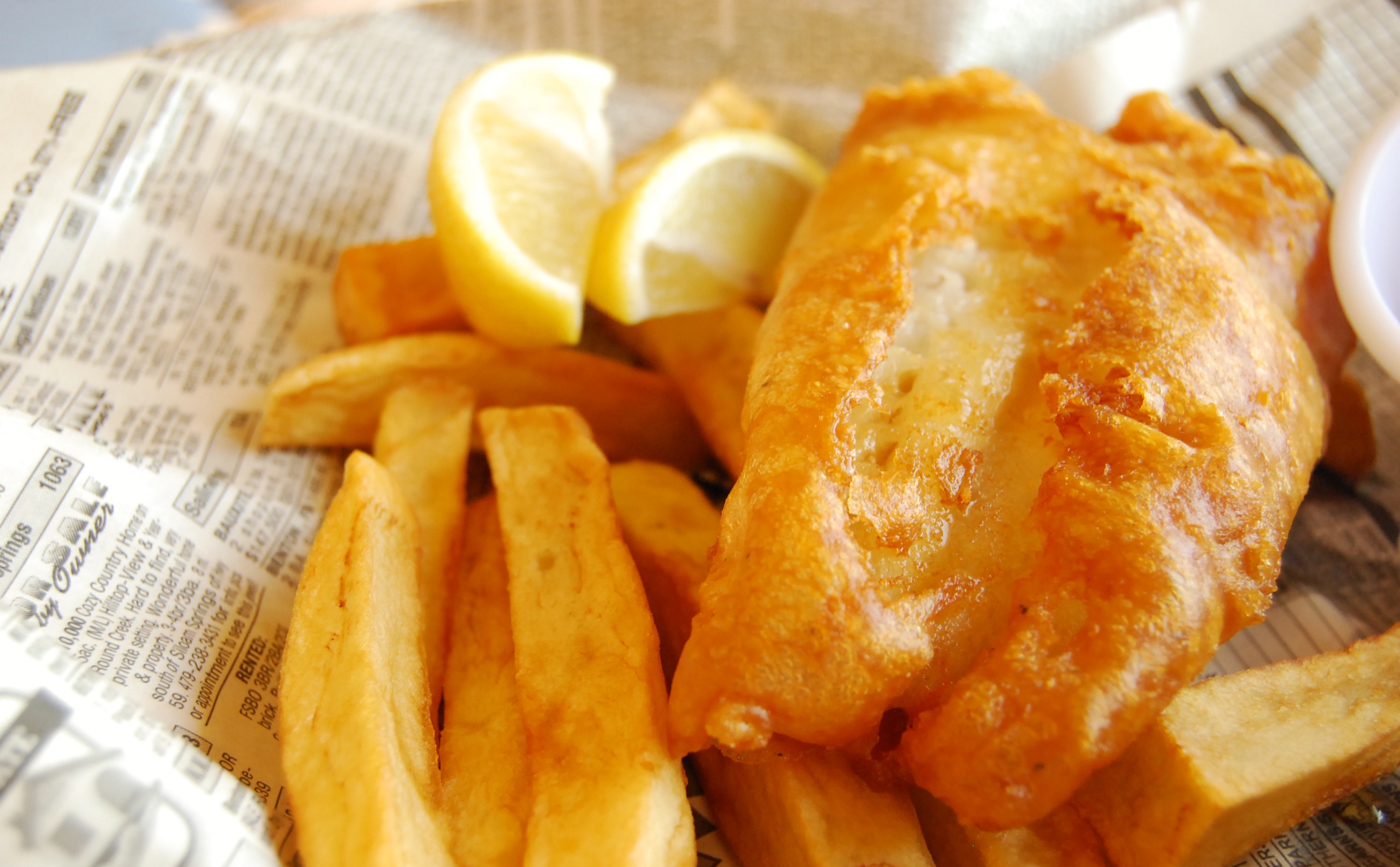29 November 2018
Eat It All!
Edible wrappers.
By Chin Chin
Eating fish and chips is a form of education. No, I don’t mean that the actual chewing teaches you anything, although for all I know the graunching systems of modern dustcarts may be based on those of the human mouth. Nor is it the way in which eating plenty of fish stimulates the little grey cells. It is more direct than that. Traditionally, fish and chips come wrapped in an old newspaper giving you the opportunity to reread articles which appeared in the press weeks ago but which you have forgotten about. They are more interesting second time round as well. The very fact that the headline is largely obscured by a blob of grease adds to its allure. Better still, if you have only the first page and not the page on which the article is completed you can spend the rest of the day wondering how it ended, plenty of food for the imagination.
Food was at the centre of the article wrapped around my fish and chips last night. Not conventional food, as described by restaurant critics with cameos for celebrity chefs. Actually it was plastic bag food, the invention of Dr Dmytro Bidyuk and his colleagues at the National Agrarian University in Sumy, an institution in Ukraine. They have invented a form of plastic bag which decomposes in twenty-one days and, being composed of seaweed and a starch made from red algae, can be eaten when worn out. The article did not say whether they were delicious or not, but, if the taste of normal plastic bags is anything to go by, they will come about halfway up the menu of a typical high street fast food chain, bland and needing a good sauce to make them palatable. Still, the fact they are edible at all could mean quite a change in our attitudes.
“Eat your beans or it’s plastic bags for you tomorrow,” could become a common refrain around the family dinner table. “For goodness sake, take this meat away and bring me the bag. It can only taste better,” would indicate to a restaurant that you were not entirely satisfied with its offering, and the Hannibal Lecters of the future would be heard intoning softly “A bag lady, how delicious.”
Still, for most of us it is a matter of timing. If food came wrapped in the new plastic, the fact that it would decompose in twenty-one days would force you to consume it within that period. Otherwise the wrapping would break down and the contents would spread themselves about the fridge rather as the Black Death spread through Europe in the fourteenth century. Suppose that the bag contained olives. They would drip into the food below. That would be all right if it was vegetables since carrots and olives go quite well together. Less satisfactory, however, if it was a custard tart. It could be worse though. The contents of the bag might not be olives, but mincemeat. I leave that one to your imagination.
In order to avoid disaster, one would have to keep a careful eye on what was in the fridge, the expiry date of the packaging being more important than the expiry date of the food itself. Cinderella-like, we would always be aware of the coming stroke of the clock. Gradually we would become neurotic and a kitchen would no longer be complete without a list of package expiry dates stuck to the front of the fridge. Expiry date chat would take the place of conversations about the weather at bus stops, and the middle classes would describe their fridge management systems in the hushed tones they normally reserve for their children’s achievements.
But it wouldn’t end there. Cups and drinking straws can also be made of the new material and consumed with their contents. What a change that could make to the inside of my car. No more detritus of plastic cups rolling around on the floor, but delicious snacks consumed with the coffee they contained. Let’s hope it is possible to flavour the cups with a little ginger and chocolate.
The most noticeable change, however, would be to marketing. We have all seen how manufacturers of confectionery shrink their bars in an effort to keep prices down. Once packaging became edible the same rules of economics would apply to it and the current trend towards ever more unnecessary and elaborate packaging would disappear. In fact, the packaging might become the central part of the purchase and we may see “Strawberry packaging. 30% off. Choice of fillings” in the corner of the newspaper as we eat our fish and chips. Still, by then the newspaper will be made from the new plastic and may be the most edible part of our supper. It would be a pity to spoil that by printing on it. Perhaps a better answer would be to keep the wrapping clean and print last week’s news on the fish itself.


